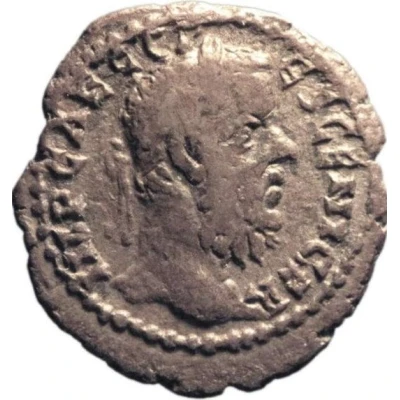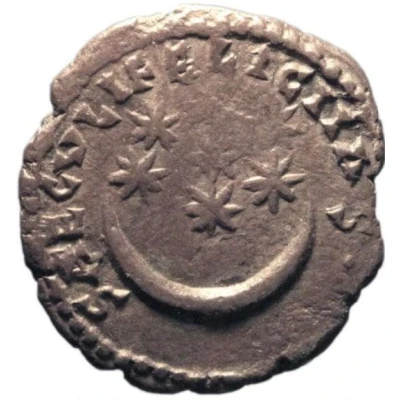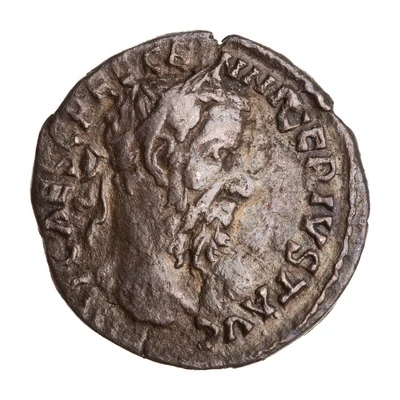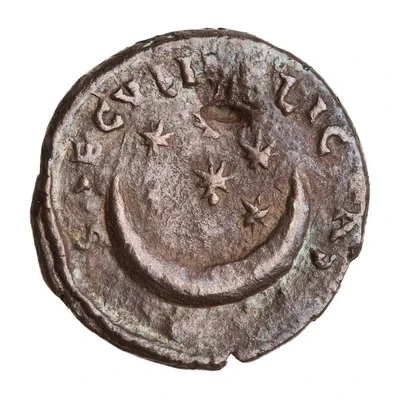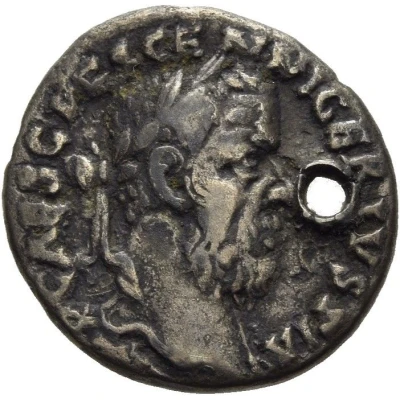
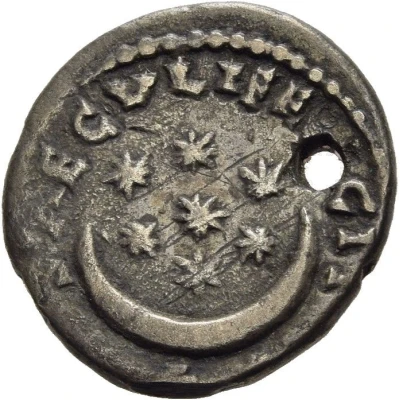

Denarius - Pescennius Niger SAECVLI FELICITAS
| Silver | 3.2 g | 17 mm |
| Issuer | Usurpations of Syria (Roman Imperial usurpations) |
|---|---|
| Ruling authority | Pescennius Niger (193-194) |
| Type | Standard circulation coin |
| Years | 193-194 |
| Value | Denarius (1) |
| Currency | Denarius, Reform of Augustus (27 BC – AD 215) |
| Composition | Silver |
| Weight | 3.2 g |
| Diameter | 17 mm |
| Shape | Round (irregular) |
| Technique | Hammered |
| Demonetized | Yes |
| Updated | 2024-10-10 |
| Numista | N#271330 |
|---|---|
| Rarity index | 100% |
Reverse
Crescent moon and seven stars above.
Script: Latin
Lettering: SAECVLI FELICITAS
Translation:
Saeculi Felicitas.
Age of good fortune.
Comment
Punched at 3 h. - Pescennius Niger (born between 135 and 140 AD) served as a military commander under Commodus. Between 183 and 191 AD, he had already been suffect consul (i.e. moved up) once and had been provincial governor in Syria since 191 AD. There he had himself elevated to Augustus in mid-April 193 AD. In the middle of the year he was declared an enemy of the state and suffered several defeats against Septimius Severus, most recently at Issos in Cilicia at the beginning of 194. At the end of April 194 AD, Pescennius Niger was captured near Antioch and executed.
From Commodus to the Severans
Marcus Aurelius' elevation of his own son Commodus to Augustus in 177 AD proved to be a mistake. His reign from 180-192 ended with the assassination of Commodus and plunged the country into civil war. The provincial governor of Pannonia Septimius Severus (193-211) was able to assert himself. The rulers who followed him, starting with his son Caracalla (211-217), Elagabalus (218-222), who had to assert himself against Macrinus (217/218 AD), through to Severus Alexander (222-235), legitimised themselves with reference to their Severan origins.
Interesting fact
One interesting fact about this coin is that it was minted during the reign of Pescennius Niger, who was a usurper of the Roman Empire in the 2nd century AD. Despite being a legitimate emperor, Niger's rule was not recognized by the Roman Senate, and his coins were not widely accepted as legal tender. As a result, the coinage of Niger's reign is relatively rare and highly sought after by collectors today.
